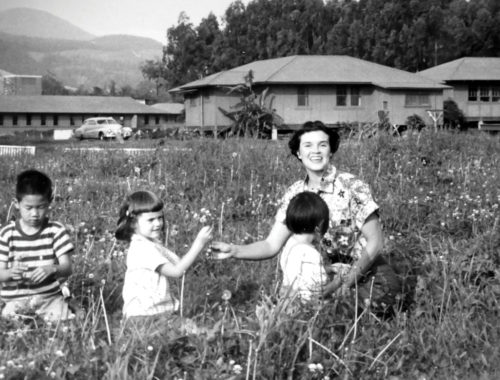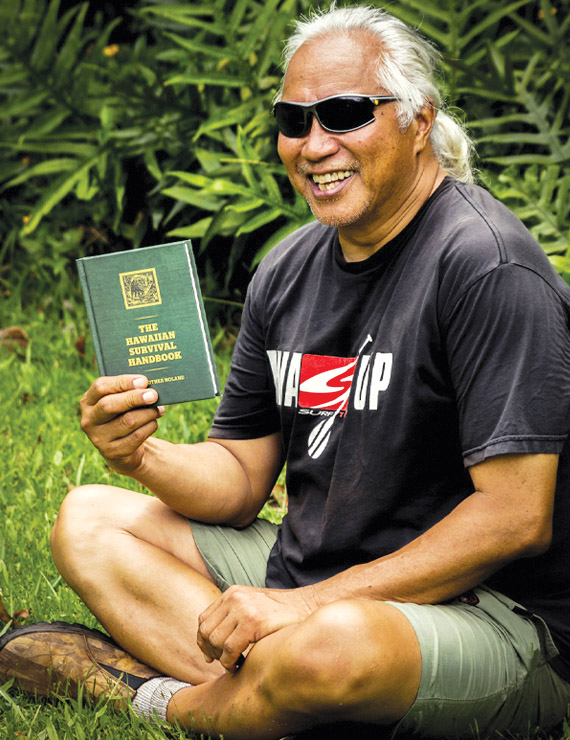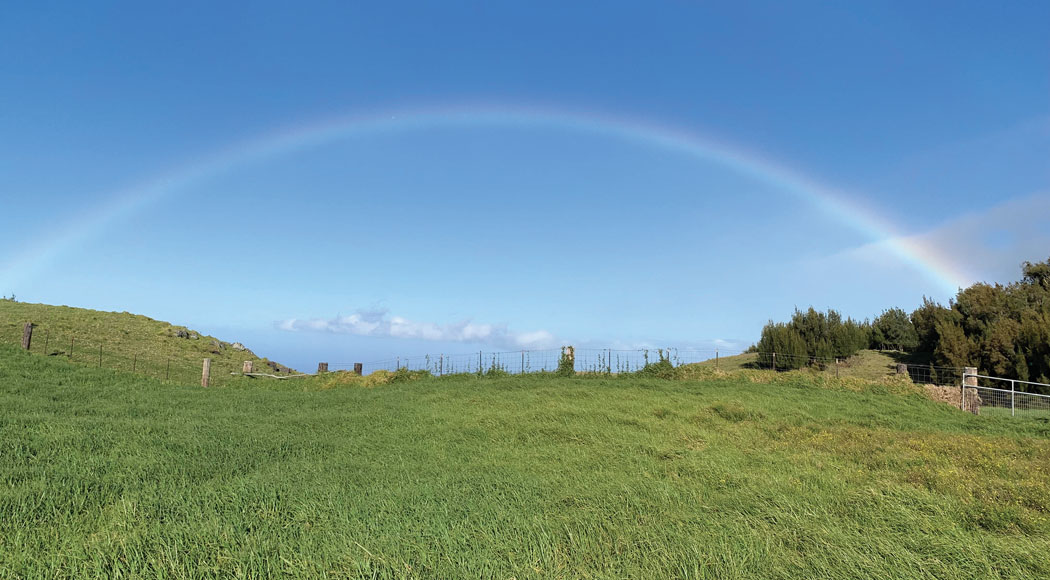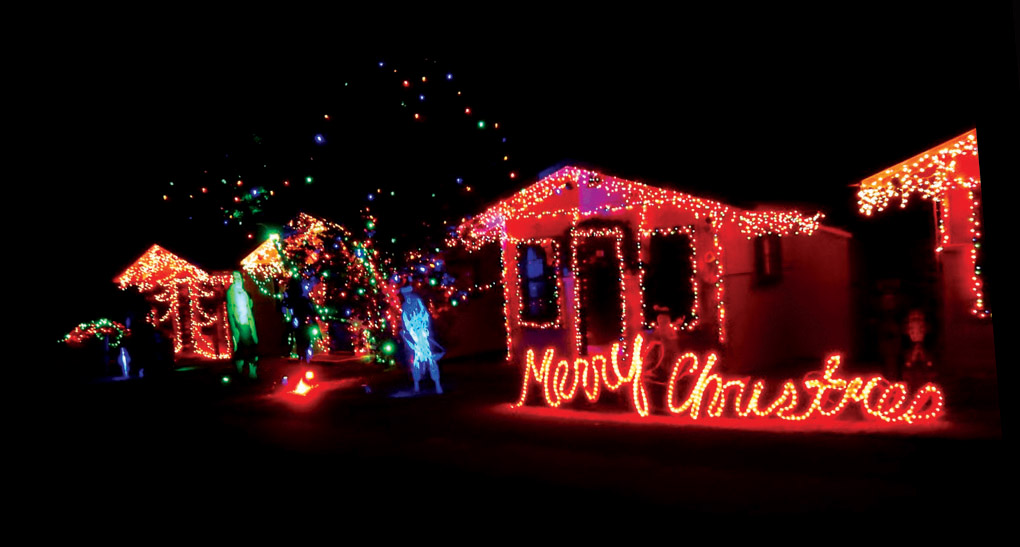
At Kilauea Military Camp: Morale, Welfare and Recreation are Served Along with Aloha

By Karen Valentine
Eyes light up when visitors to Hawai‘i Volcanoes National Park (HVNP) arrive during the holidays and they see the seemingly incongruous row of small cabins, lined up in military precision, bedecked with colorful holiday decorations, each one different from the other.
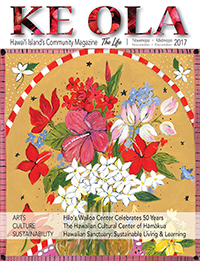
These are the historic cottages that line the front entrance of Kīlauea Military Camp (KMC). Incongruous because KMC is part of the U.S. Army’s MWR (Morale, Welfare and Recreation) Program for active duty military and their families, even though it’s located within the unrelated National Park. It is a unique situation among the many worldwide military MWR destinations. The holiday decorations, conceived as a contest among KMC employees and departments, are meant to bring cheer to the guests, while perhaps reminding the public of soldiers who aren’t coming home for the holidays.
This is a place where hospitality is dispensed with aloha, as management and personnel are dedicated to their mission and proud of the camp’s history. November and December are significant months at KMC, not only for the holiday decorations, but also for Veterans Day, November 11, and Pearl Harbor Day, December 7. Each Veterans Day a ceremony and program is held next to the sky-high flagpole on the spacious front lawn at KMC, featuring a prominent speaker. Pearl Harbor Day isn’t marked there as such, however it commemorates a chapter of history at KMC, when it served as an internment camp for Japanese residents of Hawai‘i following the infamous attack on Pearl Harbor at the beginning of America’s entry into World War II, and later as a prisoner-of-war camp.

Today, as throughout its history, KMC’s mission is to serve as a vacation retreat for the soldiers and families, especially during their leaves just before and after their deployments overseas. It supports all branches of the military as well as National Guard and Reserve components.
“They deserve all the quality time they can get,” says Deputy Director Bruce Taylor, who emphasizes the spirit of aloha offered there by all the employees. “KMC stays very busy; word of mouth is why folks come here and keep coming back. Some of our guests have grown up here, having returned every year.”
Accommodations are available in 90 charming, 1920s-era guest cottages and apartments with one, two or three bedrooms and fireplaces. Some of the buildings and all but one of the cabins are decorated with Hawai‘i-themed stained glass windows, a motif first begun with local artist Beverly Jackson in the 1980s as part of a cabin remodeling. There is also a 110-bed dormitory for groups. All accommodations are reserved for military patrons, family members and their sponsored guests at reasonable rates, compared with hotels and resorts. The cost varies depending on the ranks of soldiers, with the higher ranks paying more, Bruce said.
In addition to the accommodations, the KMC campus of nearly 50 acres also includes the popular six-lane Bowling Center; Crater Rim Café; Lava Lounge, meeting and banquet facilities; a general store; a recreation lodge; tennis, volleyball and basketball courts; fitness center, and a theater. Events are held regularly, such as the Mongolian BBQ dinners. The lounge, restaurant and recreation facilities are also open to the public.
“Our six bowling lanes are very busy,” says Bruce. “They have a seniors league, and lots of people come up from Hilo, which no longer has a bowling center.”
Not only do guests have the opportunity to view an active volcano each day and night right outside their front door, the camp also offers tours to all parts of the island and promotes the nearby Volcano Golf Club.
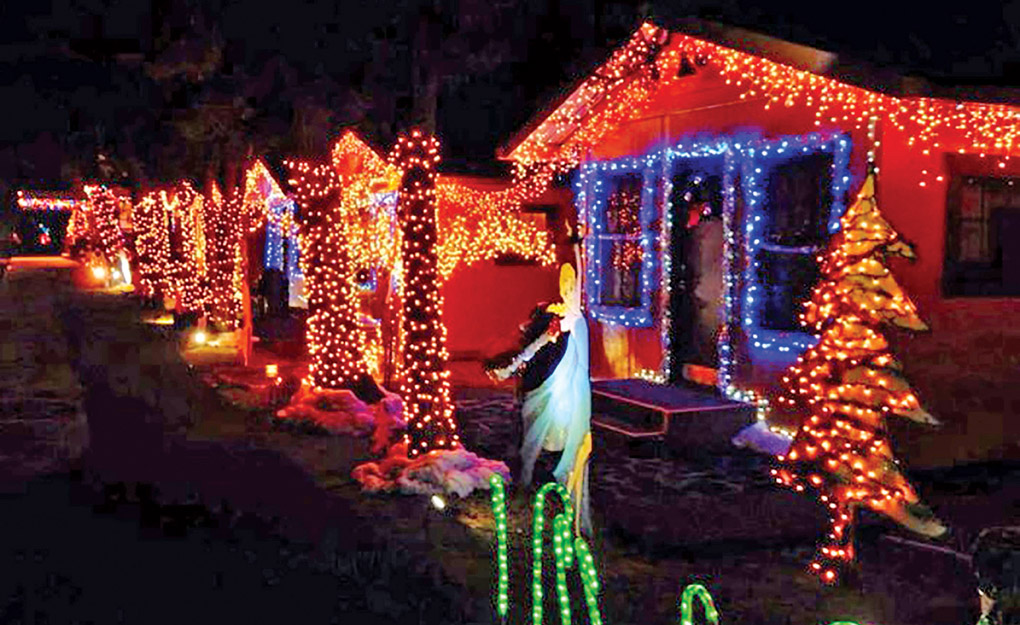
A Fascinating History
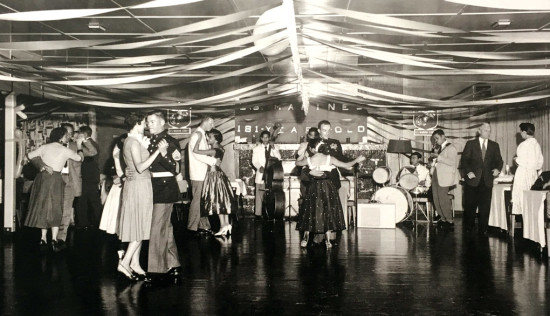
photo courtesy of Kïlauea Military Camp
Both Kīlauea Military Camp and Hawai‘i Volcanoes National Park celebrated their centennials last year, each having been established in the same year, 1916.
The world was also at war in 1916, and military preparedness was on the minds of a group of enterprising Hilo businessmen. Since the Volcano area was a popular vacation spot, they decided to invest $17,000 to create a maneuvering ground for the National Guard and a vacation spot for Hawai‘i members of the army. At that time they took a lease with Bishop Estate, which owned the land. After the National Park was established, the tenancy of KMC’s land within the park’s 300,000-plus acres came under a Special Use Permit with HVNP. It is renewed every 10 years. When KMC first opened its doors it only had an officers’ building, eating and cooking facilities, latrines and tents for sleeping. The private venture was not as profitable as hoped, and the local entrepreneurs asked the Army to take over management in 1921.
By 1922, the tents were replaced with cottages, and a post exchange, bakery, barbershop, power and water plants were added. A bell tower was installed to warn of volcanic eruptions.

By 1937, KMC had expanded vacation accommodations for 23 officers and their families, and about 200 enlisted men, as well as the 14 officers and enlisted men of the permanent detachment. Plans were underway within HVNP, as well, to help the war preparation efforts. Park rangers and volunteers formed committees with the shared goal to offer park services to army units stationed on the island of Hawai‘i.
Following the Pearl Harbor attack, Federal Bureau of Investigation (FBI) officials and local police began arresting mostly male Japanese immigrant community leaders starting on the night of December 7, 1941 and continuing over the next few weeks. All such men on the island of Hawai‘i whom authorities had previously identified as potential threats were taken to KMC.
All of Hawai‘i was under martial law, and national park officials were required to enforce martial law regulations.
KMC became the largest incarceration center in the islands outside of O‘ahu. Inmates were treated well, according to personal accounts by the Japanese internees, and they were soon moved to other locations like Sand Island in Honolulu and then to the mainland.
Following the departure of Japanese inmates in 1942, authorities built a prisoner of war (POW) camp at KMC in 1944. By July of 1945, approximately 100 POWs—Okinawans and others—were housed there.
Throughout its history, KMC has hosted top military generals and dignitaries. One of the visitors in 1946 was Army Chief of Staff Gen. Dwight D. Eisenhower, who stayed in a slightly larger cabin that is now decorated with pictures of the former supreme Allied commander and US President.
Serious About Historic Preservation
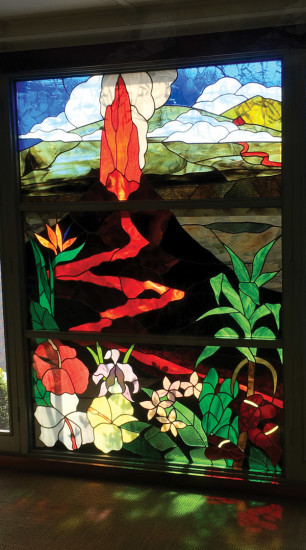
KMC is situated within the Crater Rim National Historic District designated for Hawai‘i Volcanoes National Park. Since all of their structures—buildings and rock walls—are of similar age, their styles blend together seamlessly.
From the beginning, buildings were preserved and repaired instead of being torn down, according to Bruce. “Due to the fact that we are part of the Army, state and national historical preservation registries, rules are very strict about repairing or replacing anything. The glass in my office window is still original and everything must be historically correct. Everything is extremely well-preserved.”
Cabin exteriors still look as they did in the 1920s, yet the interiors are modern, with all the conveniences guests might want or expect.
“The U.S. Army are excellent stewards of the property and environment,” says Bruce. “Our entire water system is self-sustaining with on-site filtration, rainwater treatment and storage. We have a unique arrangement with HVNP, which doesn’t have to do any maintenance. The U.S. Army Garrison-Hawai‘i is responsible for the infrastructure. Our operations are mostly self-sustaining with expenses and supplies paid for by KMC revenue, therefore not taxpayer funded.”
As building repair and construction projects come up, the Army calls in members of Engineering Battalions or “Seabees” to work with KMC crew as apprentices and acquire training for military projects overseas, Bruce says.
The Hawai‘i Army Weekly newspaper described a project completed in 2012 at KMC:
The 33 Soldiers—comprised of carpentry and masonry specialists, electricians, plumbers, concrete and asphalt equipment operators and a surveyor—came together to successfully complete the construction of a retaining wall…..
Working at KMC was a perfect opportunity for Soldiers to cross train outside their mission occupation specialties and learn carpentry and masonry skills they will need to build the school in the Philippines,” said Staff Sgt. James Rose, squad leader, 643rd Eng. Co. “They need to adapt to building the structures the climate supports because construction is our main mission in the Pacific. It was great to get hands-on experience.
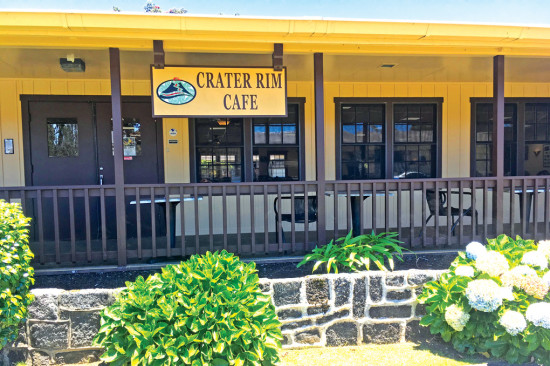
Bruce says KMC’s approximately 100 employees like working there and they have little turnover. “People like what they do. Our loyal long-term employees are extremely talented. We take care of our guests with Aloha spirit, as one big family. Because they care so much about our guests, they often go beyond the call of duty. For example, we’ll have housekeeping staff volunteer to do babysitting, and other staff chip in to help change a flat tire for a guest. The more we stay full, the cheaper we can keep it for the average young soldiers and their families.”
Veterans also get a lot of respect here. Various veterans’ organizations, such as the Wounded Warriors Program and Single Soldiers Program, use the facility.
Bruce comments, “You don’t see uniforms, either, so rank isn’t noticed. Everybody’s a VIP at KMC.”
This year’s Veterans Day ceremony and program on November 11 at KMC will feature the Commander of Pohakuloa Training Area Lt. Col. Christopher Marquez as keynote speaker. It is free and open to the public. ❖
For more information: kilaueamilitarycamp.com.
